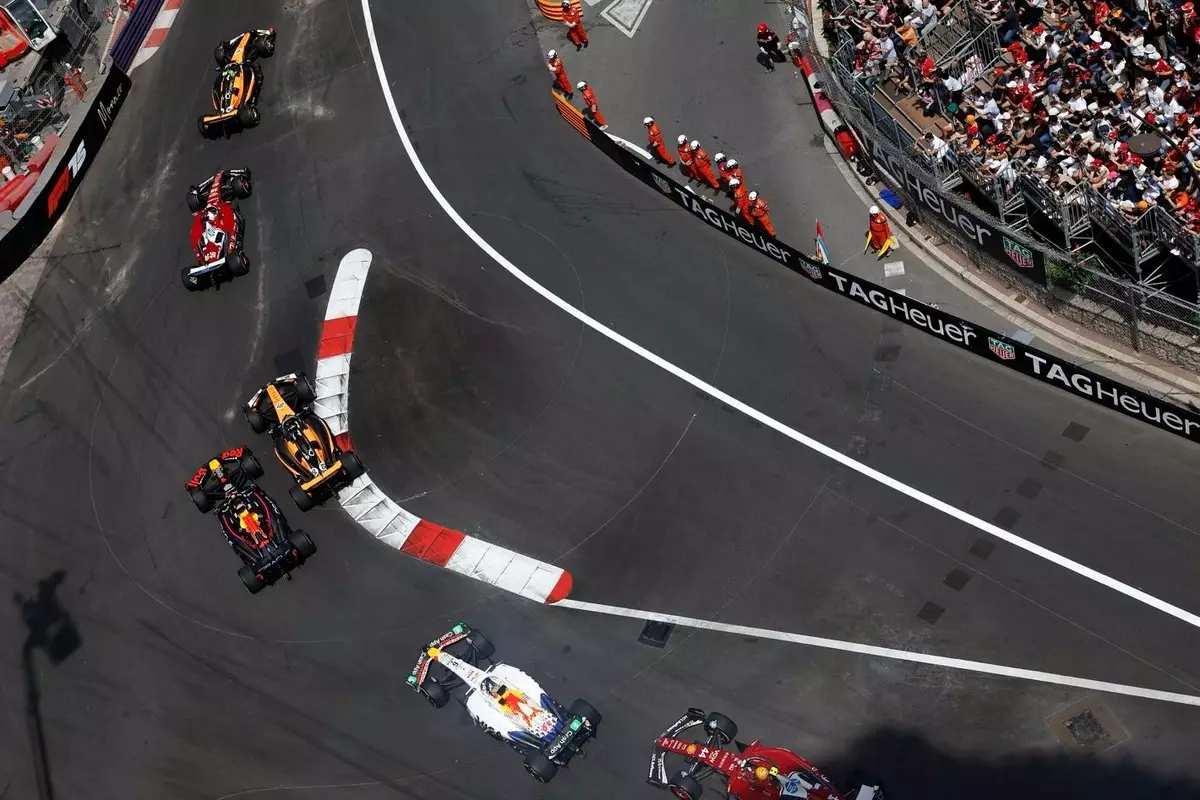In the high-octane world of Formula 1, few circuits are as iconic as the picturesque Monaco Grand Prix. Yet, as George Russell has pointed out, the event is in dire need of a radical overhaul after yet another underwhelming race. While the intention behind the recent rules experiment—to introduce a mandatory two-stop strategy—was to inject unpredictability into the main event of the weekend, it ultimately fell flat. The historical streets of Monaco, renowned for their beauty and rich motorsport heritage, are enduring a disconnect with the competition on track. As the sport approaches a century of racing in this glamorous locale, it’s imperative to question whether the current format serves to enhance or detract from the overall experience for drivers and fans alike.
A Formula for Stagnation
The essence of a great race lies in its ability to surprise and enthrall. Unfortunately, the recent Monaco experience revealed a dismal lack of excitement, particularly in the context of expected overtaking opportunities. The reigning champions from the qualifying rounds maintained their positions with enviable ease, which only deepened the feeling of stagnation within the event. Russell’s frustrations were compounded by witnessing drivers employing tactics designed to create artificial gaps for their teammates—an unsatisfactory ploy that did little to stimulate competitive engagement on the track. This begs the critical question: can the spirit of racing thrive in an environment where such calculated maneuvers persist?
The introduction of a three-tyre mandate was aimed at refining race strategies. Instead, it resulted in a mechanical shuffle rather than any meaningful advancements in competition. Qualifying sessions, which traditionally generate adrenaline-inducing excitement, have inadvertently overshadowed the race itself. Russell’s suggestion of transforming Monaco’s race format into a qualifying-centric event—a “qualifying race” on both Saturday and Sunday—merits serious discussion in the broader context of F1’s evolution.
The Quintessential Monaco Experience
Monaco is an embodiment of glamour, hosting a unique blend of motorsport and luxury. Yet, Russell’s candid comments underline a troubling disconnect between the race’s competitive integrity and the lavish ambiance. As he so eloquently stated, driving slowly in a procession, akin to an “F2 car,” is unacceptable in a sport heralded for its speed and thrill. Drivers should be pushing their limits, engaging in fierce head-to-head battles, and delivering breathtaking performances—not merely indulging spectators as they sip champagne on their yachts.
For the sport to recover some of its lost glory in Monaco, decision-makers must consider proposals that align with both the spirit of racing and the expectations of its audience. In the past, unpredictable weather conditions have spurred thrilling races, but relying on Mother Nature for excitement is not a sustainable strategy. While Russell’s exploratory ideas are commendable, they also highlight a larger issue: the unique Monaco Grand Prix needs to reclaim its identity as a “race” and not just as an extravagant event where drivers become footnotes against a backdrop of opulence.
Innovative Solutions for a Historic Venue
There is no one-size-fits-all approach to revitalizing a storied event like the Monaco Grand Prix, but creativity, boldness, and willingness to experiment are fundamental to success. For instance, a phased introduction of new track layouts could preserve its iconic status while creating additional overtaking opportunities. Furthermore, introducing more collaborative ideas among teams might encourage strategies that spark genuine competition rather than contrived gaps.
Russell and his colleagues’ insight that “we have to think about solutions” acknowledges a shared responsibility. The time is ripe for collective brainstorming that prioritizes both fan engagement and driver satisfaction. The Monaco Grand Prix stands on a precipice; it can either innovate and evolve or risk becoming a relic of a bygone era, eclipsed by faster, more adaptable racetracks around the globe.
As Formula 1 enthusiasts reflect on the recent Monaco race, it becomes increasingly evident that it is not merely the rules that need alteration but the entire approach to racing in this famed city. If all stakeholders can agree on a forward-thinking path, Monaco can reclaim its place as one of the most thrilling spectacles in motorsport history.

